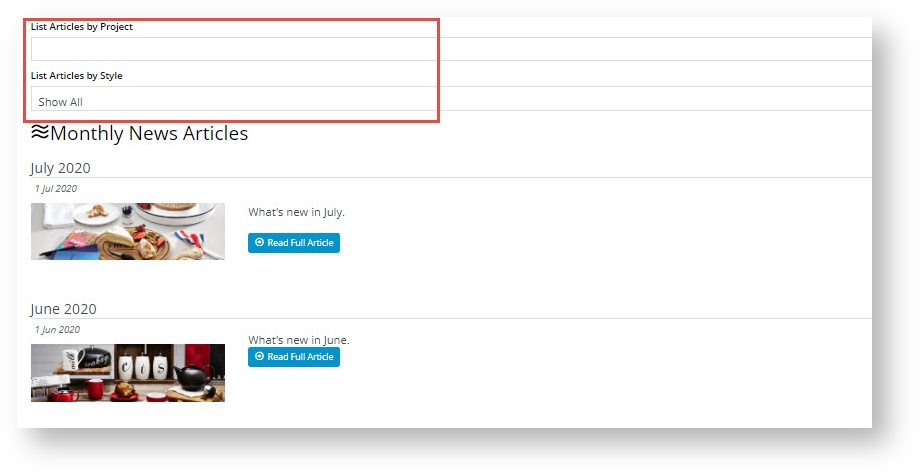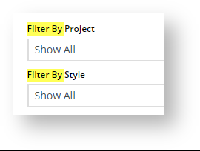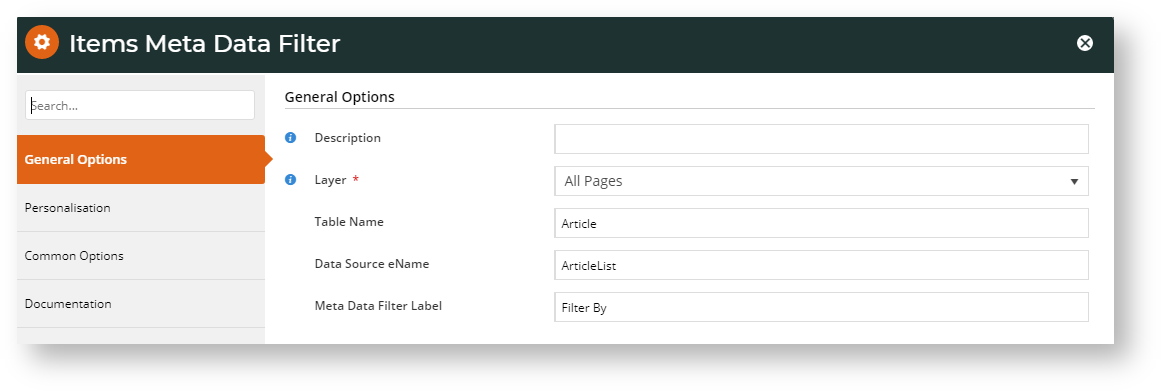Overview
When an article is created, there is an option of adding Feature values to categorise article content. These are user-defined metadata that can then be used to add an article filter in an article list page. This is handy especially when there are many articles under an article type as website visitors browsing through the article list can quickly find relevant content.
Use case
Availability - version 4.23
Step-by-step guide
The process of adding a features filter involves a number of configuration steps in various screens. Before beginning to enter metadata, think about the Features and Values that are meaningful to the article type.
1. Add Features and Values for Article
When creating an article, you will see a Features section in the 'Edit Article' screen. (See Article Maintenance for details.) You can add as many features (Names) and corresponding values (Values) as you require.
Use case
For our example, we want to create a feature filter so visitors can quickly find articles that suggest design and decorative products for various rooms in their homes. We name the first feature 'Project' with various rooms as values: 'Bedroom', 'Loungeroom', 'Kitchen' etc. The second feature 'Style' allows the users to narrow the results further, with values such as 'Modern', 'Traditional', 'Contemporary', etc.
2. Enable the Feature Filter in the Article List widget
Next, we need to enable Feature Filter so that it appears in the Article List page.
Two filter modes are available: client side, and server side.
- Client side mode: processes the filter data in the client web browser. Only works when the pagination is turned OFF i.e. when all articles are listed on one page. This mode is faster and suited for smaller number of articles.
- Server side mode: processes the filter data by accessing the database server and returning information from the relevant table. Suited if pagination is ON. This mode is more efficient when filtering larger numbers of articles.
Configuring each mode is slightly different.
(i) Set up Client side filtering
Warning
For Client side filtering, ensure the Items Meta Data Filter Widget is not active in the Article List template. This is only used for server side filtering.
- In the Article List template used (either 'Article List Page' or 'Article List Item Zoned'), find the widget that renders the Article List (either the Article List or Article List All widget).
- In General Options, toggle on Enable Client Side Meta Data Filter?. Note - In the Article List widget, the fields are located at the bottom of the screen.
- The Meta Data Filter Label displays the filter label's text. Change from the default 'Filter By' if you wish.
- to save these settings, click Save.
(ii) Set up Server side filtering
Configuring the server side mode requires adding the 'Items Meta Data Filter widget' in the article list widget used.
- In the Article List template used (either 'Article List Page' or 'Article List Item Zoned'), click Add Widget in the relevant zone.
- Find the 'Meta Data Filter Widget' and click Add Widget.
- Enter information in the fields:
Description: enter a meaningful description of the filter function.
Layer: add audience filtering if required (see Layers.)
Table Name: set the table name to be filtered against; in most sites, use the default. Default: Article
Data Source Name: set the data source for filtering; in most sites, use the default. Default: ArticleList
Meta Data Filter Label: Displays the filter label's text. Change from the default: 'Filter By' if you wish.- To save the widget settings, click Save.
Add Article List Pagination widget
Unlike Client side filtering, Server side filtering will work with pagination. If there are many items in the Article List, you can add the Article List Pagination widget and related widgets, e.g., the Article List Results Per Page widget, to display articles on multiple pages. (See help for each widget for configuration guidance.)
Additional Information
You may require some style sheet updates in order to keep consistent with your website's style guide. If this is the case, please contact us for assistance.
| Minimum Version Requirements |
|
|---|---|
| Prerequisites |
|
| Self Configurable |
|
| Business Function |
|
| BPD Only? |
|
| B2B/B2C/Both |
|
| Ballpark Hours From CV (if opting for CV to complete self config component) |
|
| Ballpark Hours From CV (in addition to any self config required) |
|
| Third Party Costs |
|
Related help
Related widgets





